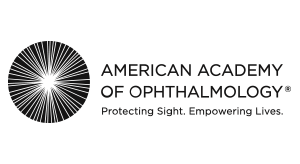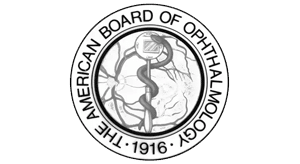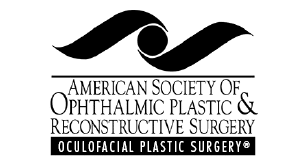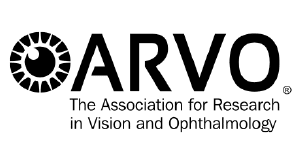Blepharoplasty (Eyelid Surgery)
Surgically address adverse visible and aesthetic effects of aging and environmental damage

Surgically address adverse visible and aesthetic effects of aging and environmental damage

Blepharoplasty, also known as eyelid surgery, is one of the most common procedures performed weekly by Dr. Kahana and our team at Kahana Oculoplastic and Orbital Surgery.
Both lower eyelid blepharoplasty and upper eyelid blepharoplasty surgically address adverse visible and aesthetic effects of aging and environmental damage to the eyelids and periorbital eye area. Blepharoplasty addresses both cosmetic concerns and functional issues. This surgery helps improve the appearance of the eyes and face—giving patients a refreshed, more youthful look while helping to improve eye comfort and field of vision
Through the process of aging, our eyelids can begin to stretch and the supporting muscles weaken, leading to sagging skin, baggy eyes and in some cases, impaired peripheral vision.
Blepharoplasty encompasses several surgical techniques designed to remove/reposition excess tissue and fat deposits from the upper and lower eyelids and tighten muscles to create a rejuvenated look.
While blepharoplasty can enhance the appearance of your eye area, it is considered major surgery. That’s why it’s important to think carefully about your expectations and express your goals to your oculoplastic surgeon, who will discuss potential risks and complications with you prior to the procedure.
Often referred to as an “eyelid lift,” upper eyelid blepharoplasty is a common surgical solution for patients that come to Kahana Oculoplastic and Orbital Surgery with upper eyelids that appear to be heavy or drooping.
This is caused by excess skin, muscle weakness and sometimes movement and/or accumulation of fat deposits that occur over time in the upper eyelid region, contributing to a tired or aged appearance.
Typically performed under local anesthesia with sedation, upper eyelid blepharoplasty involves the careful removal of excess skin, tightening of stretched/weakened muscle tissue, debulking protruding fat pads, and reforming or strengthening the eyelid crease.
The result is a more alert and youthful appearance, with scars well-concealed in the eyelid crease. Additionally, our patients can experience improved peripheral vision from the removal of overhanging skin. At times, drooping of the eye brows can affect the appearance of the eyelids, and this needs to be thoroughly examined and discussed with your surgeon.
Your skin naturally loses elasticity and facial fat volume over time—making the lower eyelid look puffy, baggy and wrinkled.
Cosmetic lower eyelid blepharoplasty, which is sometimes referred to as eye bag or lower lid surgery, is a complex procedure designed to correct excess or herniated fat, loose skin and wrinkles of the lower eye region.
This makes the under eye smoother, resulting in a more youthful, rested appearance.
Surgeons performing lower eyelid blepharoplasty typically choose between two main surgical approaches:
This approach is best for when excess skin is a major feature of the lower eyelid aging. The surgeon makes an incision below the lower lash line, allowing for removal of excess skin in addition to repositioning or removal of excess fat, thereby achieving a smoother under-eye contour. This approach addresses skin laxity by allowing the surgeon to directly visualize and manipulate the skin to create a tighter, smoother appearance.
Transcutaneous blepharoplasty often incorporates advanced techniques to achieve superior outcomes. This includes canthoplasty for lid support, chemical peels or laser resurfacing for skin texture, fat repositioning to fill tear troughs and strategic volume restoration using fat transfer.
This is our preferred approach for most patients, avoiding non-essential skin incisions and unnecessary skin excision. This approach utilizes an incision on the underside of the lower eyelid to get to the fat pads, allowing removal and/or repositioning to achieve an improved contour. This achieves a smoother under-eye contour without creating external scars along the eyelid. It is often combined with CO2 laser resurfacing to thicken the lower eyelid skin to reduce fine wrinkles.
The recovery period for lower eyelid surgery typically requires 10-14 days for initial healing. During this time, it’s important to follow a specific sleeping position protocol and employ regular use of cold compresses, pay careful attention to eye lubrication, and protect your eyes from sun exposure.
The short answer is yes. Patients often achieve a more harmonious and youthful appearance by undergoing both upper and lower eyelid procedures within a single surgery. This coordinated strategy offers a number of benefits for those who desire a comprehensive rejuvenation of the eye area. This includes:
The combined upper and lower blepharoplasty approach takes approximately 2 to 3 hours under appropriate anesthesia and typically follows this sequence:
East Asian eyelid surgery, commonly known as double eyelid surgery, is designed to enhance the upper eyelid in patients who have a natural “monolid” or single eyelid without a crease—a normal anatomic variation commonly seen in individuals of East Asian descent. This variation occurs when the subcutaneous tissue attaches to the overlying upper eyelid skin.
The height of the new/enhanced eyelid crease is customized based on the patient’s unique eyelid structures and existing anatomy, as well as the desired outcome.
As with any blepharoplasty procedure, Dr. Kahana will seek to gain a thorough understanding of the patient’s aesthetic goals and unique anatomy to achieve results that are both natural and harmonious with the patient’s overall facial features.
When eyelid surgery is medically necessary, it is considered functional blepharoplasty. This is often required when a droopy upper eyelid covers the pupil and obstructs or significantly impairs vision. In this situation, functional blepharoplasty becomes crucial for maintaining daily function and quality of life.
While obviously not the intent of the procedure, a functional blepharoplasty can deliver aesthetic benefits by providing patients with a rejuvenated and more youthful appearance. Primary aesthetic improvements include:
The net result from all of these benefits often leads to a rejuvenated and more self-assured individual who will experience increased self-confidence and more positive social interactions.
While different insurance providers and plans have different rules, most insurance companies cover functional eyelid surgeries as long as they meet certain criteria, including a visual field test that shows excess eyelid skin impairs vision, documentation showing that sagging eyelids affect daily life and photographs that demonstrate skin redundancy and hooding with skin-lash contact. Insurance providers may also require medical necessity confirmation by an ophthalmologist as well as proof of failed conservative treatment measures.
Your journey through the blepharoplasty process begins with an initial consultation with Dr. Alon Kahana. During this phase, he will discuss the various aspects of blepharoplasty and recommend the most suitable treatment options and techniques based on your goals, concerns, and medical background. Dr. Kahana’s main objective will be to perform the surgery in a precise and minimally invasive manner while taking into account your aesthetic needs.
This detailed evaluation will typically take about an hour, beginning with an assessment of your medical history, including conditions that could affect surgery or healing, such as dry eye syndrome, autoimmune conditions, and thyroid disorders. Additionally, it will be important to discuss your past and present medical conditions, any previous surgical procedures, and all the medications, supplements, and over-the-counter drugs you are taking.
Dr. Kahana will also conduct a detailed assessment of your eye area’s anatomy. This includes your skin quality and elasticity, eyelid position and symmetry, brow position, muscle strength and function, fat distribution around the eyes, tear production and eye health, and brow position and forehead dynamics. You can expect Dr. Kahana and his team to perform specialized measurements of your eyelids and take standardized photographs of your eye area as well.
Upon completion of the consultation, you’ll receive a personalized surgical plan tailored to your specific anatomy and goals.
One of the best ways to optimize your surgical outcome and recovery experience involves proper preparation during the weeks leading up to surgery. While our office will provide you with detailed instructions specific to your procedure, there are a number of general guidelines that are essential for achieving the best possible results.
For example, if you are a smoker, smoking cessation is highly recommended to begin at least six weeks prior to surgery and continue for at least two weeks after, as nicotine has several negative effects on the healing process. This includes a higher risk of infection, reduced blood flow to healing tissues, delayed wound healing, poor scar formation, and an increased risk of complications.
Medication management is also important. You’ll need to discontinue any medications the doctor specifically identifies as risky based on your initial consultation, as well as blood-thinning medications such as aspirin and NSAIDs, and certain supplements including vitamin E, fish oil, and garlic.
As your surgery date approaches, there are a number of preparation activities you’ll want to consider. For example, it’s a good idea to complete required medical clearance tests, fill any prescribed medications, arrange for two-way transportation to the surgery facility and initial care, and prepare a recovery area at home with all necessary supplies. In fact, you’ll want to stock up on a gentle cleanser for the surgical area, ice packs for cold compression, artificial tears and prescribed eye drops, and meals that are easy to prepare.
Artistic vision and technical precision come together during eyelid surgery, which is most often performed as an outpatient procedure in our in-office surgical procedure room and takes approximately two to three hours if both upper and lower eyelids are done simultaneously.
To optimize your comfort, Dr. Kahana will typically administer a combination of local anesthesia and conscious sedation.
Upper eyelid surgery requires careful measurements to determine where to make the incisions, how much skin to remove, how much skin to leave behind, and how to contour the eyelid crease. We strongly believe in the “measure twice (or thrice) and cut once” mantra.
While lower eyelid blepharoplasty encompasses a variety of surgical techniques, Dr. Kahana will customize an approach based on your aesthetic goals, the degree of correction required, tissue quality and elasticity, and any previous surgical procedures. The particular types of eyelid surgery that Dr. Kahana and his surgical team performs include:
Repositioning fat usually requires “bolsters” – little white pieces of foam to hold the sutured fat in the correct position for 2-3 weeks. Removal of the sutures and bolsters is performed simply in the office.
Whether you undergo upper or lower blepharoplasty, the recovery period is extremely important to achieving optimal results. This requires patience, close attention to post-surgery instructions, and a thorough knowledge of what to expect during your recovery journey—from the days immediately following the surgery to several months moving forward. While the doctor will provide you with a personalized recovery plan, most patients follow a similar path for healing.
The first week following blepharoplasty is a period of significant healing. During days one and two, you’ll notice swelling and bruising around the eyes. This is a normal part of the recovery process. To support tissue recovery and minimize discomfort and swelling, use cold compresses for about 15 minutes at a time while keeping your head elevated at least 30 degrees. Sleep in a reclined position (even during daytime rest), using pillows to prop yourself up. Be sure not to sleep on your side and consider using a specialized recovery pillow.
Swelling should begin to subside by the end of the initial week, but you can expect some puffiness and discoloration to still be present around the eyes. Light walking and performing simple household tasks can be resumed, but avoid bending down, lifting heavy objects and strenuous exercise. You’ll also want to avoid anything that might strain your eyes, such as prolonged screen time or reading small text, and wear protective sunglasses when outdoors.
Bruising and swelling should diminish substantially during this healing period. Many patients begin to feel comfortable returning to normal activities including non-strenuous work, although contact sports or vigorous exercise should be avoided. Gentle cleansing of the surgical area is permitted during weeks two and three, as is the careful application of approved makeup. While it’s acceptable to increase your screen time, do so with frequent breaks.
The proper management and care of incisions during the progressive healing phase can significantly enhance the success of your blepharoplasty surgery. It’s important to clean your incision(s) as directed and inspect your stitches daily to detect signs of complications such as infection. Contact Dr. Kahana or our team at Kahana Oculoplastic and Orbital Surgery immediately if you notice swelling, redness, discharge, or discomfort during this period. It’s also important to continue the use of any prescribed medications or eye drops, which can reduce the risk of infection and enhance the healing process.
While individual healing rates vary, your eyelid surgery should be mostly complete by this final phase, which extends over several months. As the swelling settles and scar maturation progresses, the rejuvenated shape of your eyelids will emerge and long-term results will become more noticeable.
By the sixth month, optimal healing will be achieved and you’ll experience the full benefits of your eyelid surgery. Expect scarring to fade and become barely visible, while the skin around your eyes becomes smoother and rejuvenated—dramatically enhancing your facial features to create a more refreshed, youthful look.
Blepharoplasty is designed to provide patients with long-lasting results. But similar to any surgical treatment, proper maintenance and care are essential. For example, it’s important to maintain a healthy lifestyle with a balanced diet, regular exercise and a skin care routine that includes gentle cleansing and moisturizing. Equally important, protect your eyes from the sun by wearing sunglasses and applying sunscreen on a daily basis. Keep in mind that genetic factors and the natural aging process can affect the results of your blepharoplasty over time. But these suggestions will go a long way in minimizing the impact.
Data shows that a large majority of patients across the board are satisfied with their eyelid surgery—with many noting significant improvements in their appearance and quality of life. Other factors patients often report that generate high levels of satisfaction include improved field of vision, reduced appearance of fatigue, an increase in self-confidence, professional and social benefits, and a natural, rejuvenated look with the potential to age appropriately.
Our team is committed to your care, with exceptional attention to detail. We offer both surgical and non-surgical treatments to achieve outstanding aesthetic results
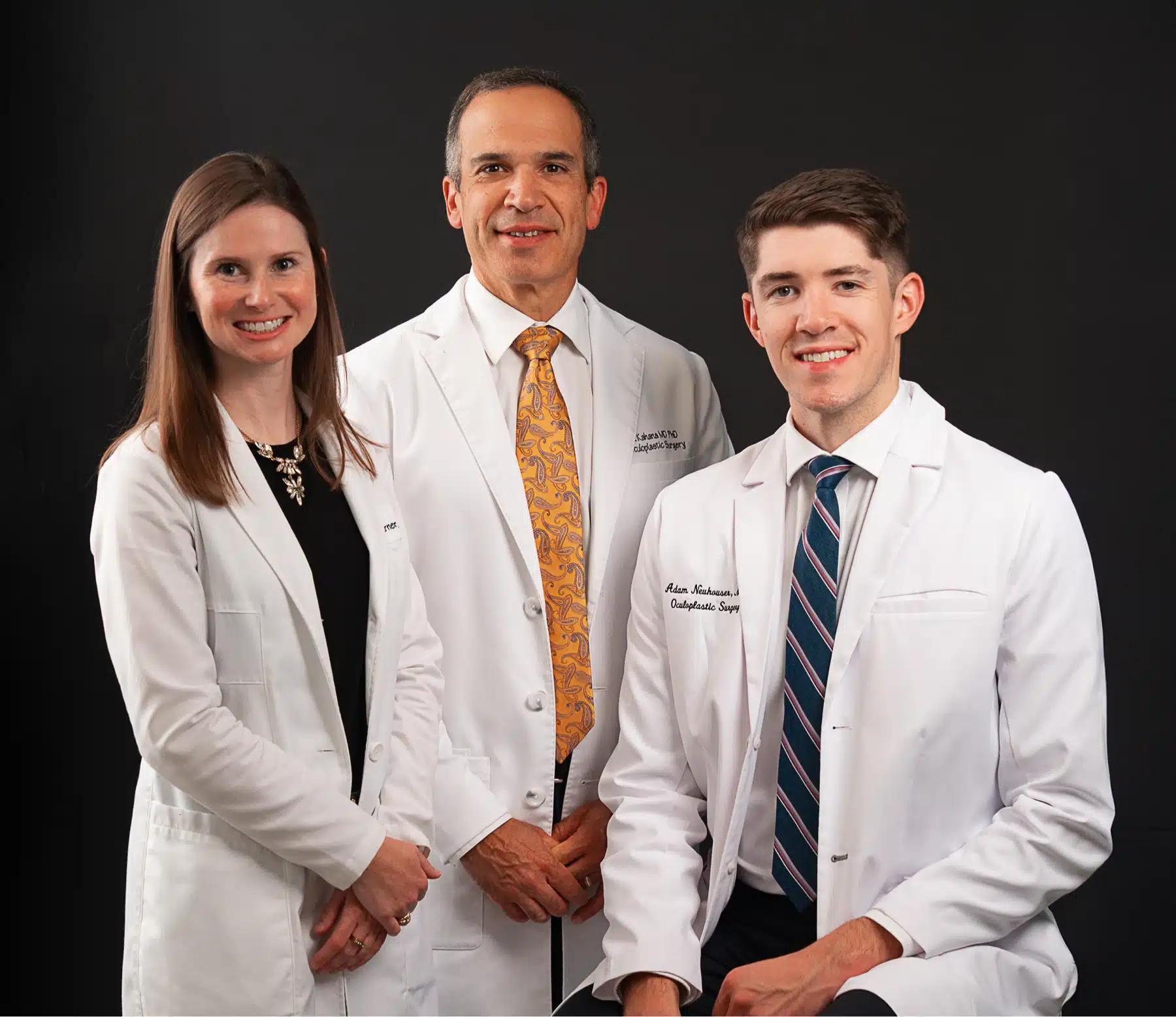


It’s important to understand that everyone’s eyes are unique and that a personalized approach to blepharoplasty is essential. This is especially true for people with diverse ethnic backgrounds, with unique facial features and beauty standards. Dr. Kahana employs the latest advancements in blepharoplasty surgery to preserve a patient’s ethnic identity and cultural characteristics while reducing the signs of aging and providing a refreshed, natural-looking appearance.
While any adult age is suitable for eyelid surgery, it’s important to understand that age isn’t the only factor in determining when to undergo the treatment.
It’s common for people in their 30s to begin noticing early signs of aging around the eyes, such as under-eye bags and/or an excess of skin in the upper eyelid. Factors that contribute to these conditions include sun exposure, which can accelerate skin aging, as well as smoking, which can reduce skin elasticity. However, a healthy lifestyle and good skin care, including the use of sunscreen and moisturizer on a daily basis, can help prevent these conditions.
Genetics can also play a contributing role in the early aging of skin. For example, many younger blepharoplasty patients opt for the surgery to address genetic bags under their eyes. The procedure can correct these undesired fat pockets through fat repositioning and/or removal. However, it’s vital for your surgeon to approach the process conservatively, because removing excessive amounts of fat beneath the eyes can age the eye area considerably.
Patients that are looking to refresh and rejuvenate their appearance can undergo eyelid surgery at virtually any age (even in their 80s). Prior to undergoing the procedure, however, it’s important for the surgeon to perform a comprehensive aging assessment. This includes the evaluation of skin thickness, tissue quality, muscle strength, and overall health. Your doctor should also discuss the patient’s overall aesthetic goals and realistic expectations. Considering all of these factors, the doctor can determine the appropriate course of action for each patient and deliver personalized care that aligns with the desired outcome.
Eyelid surgery, like all cosmetic procedures, comes with the possibility of risks and complications. While the vast majority of patients experience problem-free results, it’s important to understand potential issues right from the start.
Although temporary, patients can experience one or more side effects from the blepharoplasty procedure, including:
Facial asymmetry is both natural and desirable, however, the appearance of exaggerated asymmetries between the eyes can occur after blepharoplasty surgery. This is often the result of pre-existing facial symmetry, tissue response variations, differential healing patterns, and technical challenges.
Given that the majority of asymmetries patients notice after their blepharoplasty surgery we’re present prior to the procedure, emphasis should be placed on thorough preoperative screening, care surgical planning, and precise technical execution. Additional preventive strategies should focus on regular post-operative monitoring and early intervention when needed.
Dr. Kahana strives to provide the most symmetrical result possible for each patient. This can often be achieved with a single surgery, or through complementary procedures added to the first treatment.
Eyelid surgery is an intricate, precise procedure that blends technical skill with an eye for beauty. That’s why it’s crucially important to be in the hands of a skilled and experienced surgeon—like that of Dr. Kahana.
Consideration of the following qualities and attributes will help guide you in the selection of your eyelid surgeon and significantly impact the overall success of your blepharoplasty procedure.
Oculoplastic surgeons train first as ophthalmologists, focusing exclusively on the eye and surrounding structures. They complete specialized fellowship training in both functional and cosmetic eyelid surgery. Their expertise is in both protecting vision and improving appearance. Oculoplastic surgeons regularly perform complex eye-related reconstructive procedures and tread conditions that affect eye function and appearance.
Plastic surgeons first undergo training in cosmetic and reconstructive procedures for the entire body after completing a general surgery or ENT residency. While they may perform eyelid surgery as part of overall facial rejuvenation, their expertise is more broadly focused on all areas of the body rather than specifically on the eye region.
Selecting a doctor that is board-certified should be a top priority. This indicates that the surgeon has met the highest of standards and is dedicated to staying current with the latest innovations and developments in the field. Other qualities beyond board certification include training in oculoplastic surgery (only the finest physicians have this specific designation), an ongoing commitment to continued education, which can include involvement in both teaching and research, and memberships in professional societies such as the American Academy of Ophthalmology.
Our surgeons are all Ophthalmologists with additional training obtained through fellowships certified by the American Society of Ophthalmic Plastic and Reconstructive Surgery (ASOPRS), also know as the Oculofacial Society.
Choosing a surgeon with extensive experience specific to blepharoplasty is vitally important. Ask about the surgeon’s experience with complex cases, the number of surgeries performed on an annual basis, experience treating patients with your specific condition, and experience performing revision surgery. It’s also a good idea to inquire about the surgeon’s proficiency in emergency management.
A blepharoplasty surgeon’s portfolio of before and after photos is an essential resource for anyone who is considering eyelid surgery. The collection can not only provide patients with a clear visual representation of what to expect from the procedure, but it can also showcase the surgeon’s management of complex or difficult cases. Additionally, photos that reflect a variety of exceptional, natural-looking results will go a long way in building your confidence in the surgeon.
It’s important to place high regard on the doctor-patient relationship. The finest doctors will put you at ease by providing a clear explanation of what the surgery will entail, the results you can expect to receive, and an honest, detailed assessment of any potential risks or complications. A trustworthy surgeon will also provide comprehensive instructions for post-surgery care, while remaining readily available to address any of your questions or concerns. A good rule of thumb to follow is that If you’re not comfortable with the surgeon during the consultation phase of your blepharoplasty journey, it might make sense to consider another doctor.
The cost of blepharoplasty can be a major influence in the decision to undergo the surgery. The final cost can vary significantly based on a number of variables, which can be discussed in detail during your initial consultation. Here are some factors to consider:
Surgeon’s Fees: The surgeon’s experience and location of the practice can directly impact these costs. The complexity of the procedure can also affect a surgeon’s fee. For example, the need for a surgeon with special skills can come at a higher price.
Hospital or Surgery Facility Fees: Outpatient surgery centers are usually less expensive than hospitals, typically without sacrificing quality.
Anesthesia Services: These fees vary depending on the type of anesthesia that is used. General anesthesia often costs more than anesthesia with sedation.
Preoperative Medical Testing: EKGs, blood tests and chest x-rays are usually administered during a pre-op appointment. These costs can vary depending on where the surgery is performed.
Postoperative Care: It’s important to be aware of post-surgical expenses, as they can vary and contribute significantly to the overall cost of a procedure.
While uncommon, additional procedure costs can come in the form of revision surgery, treatment of complications, and additional surgeries. Awareness of these fees can help patients prepare for the overall financial commitment associated with eyelid surgery.
Most insurance providers do not offer coverage for surgeries performed for cosmetic purposes. However, when surgery is medically necessary to improve vision, for example, an insurance company may cover a portion of the cost. In this case, proof of medical necessity includes visual field testing results, physician documentation of necessity, documented vision impairment, photography demonstrating obstruction, and failed conservative treatments.
For patients that don’t receive help from their insurance provider or for those who would rather spread the cost of their blepharoplasty procedure over time, there are a number of financial options available to make the surgery affordable. These include traditional payment plans, medical credit cards, third-party financing programs, healthcare-specific financing, and FSA/HSA utilization.
